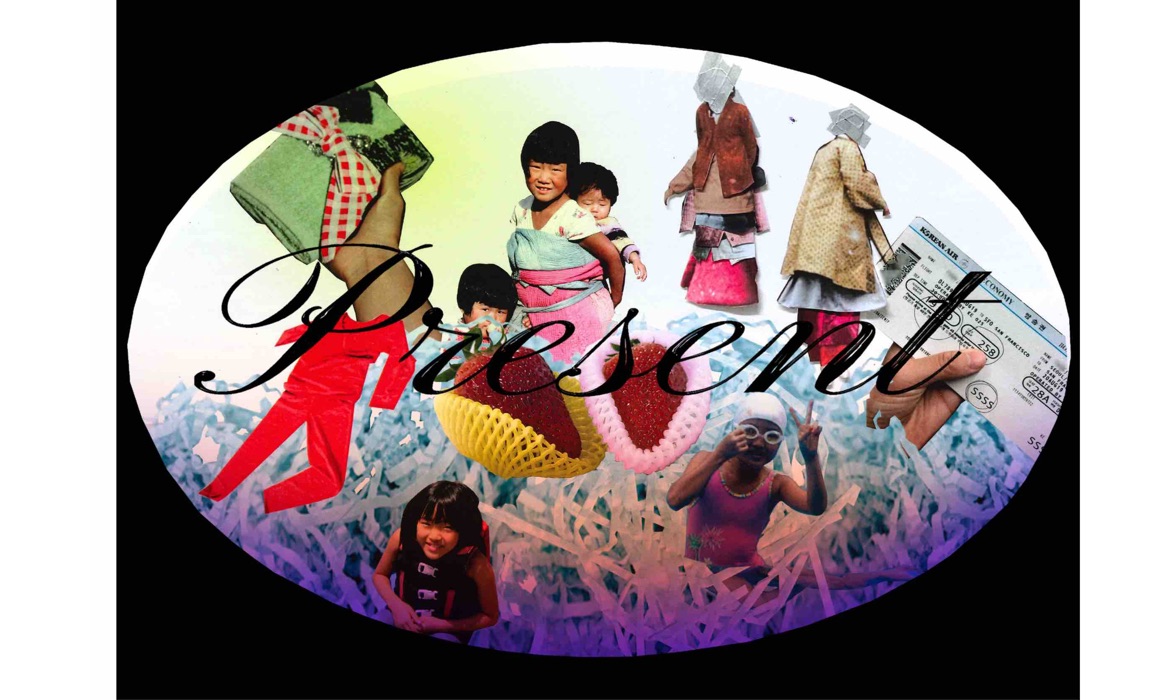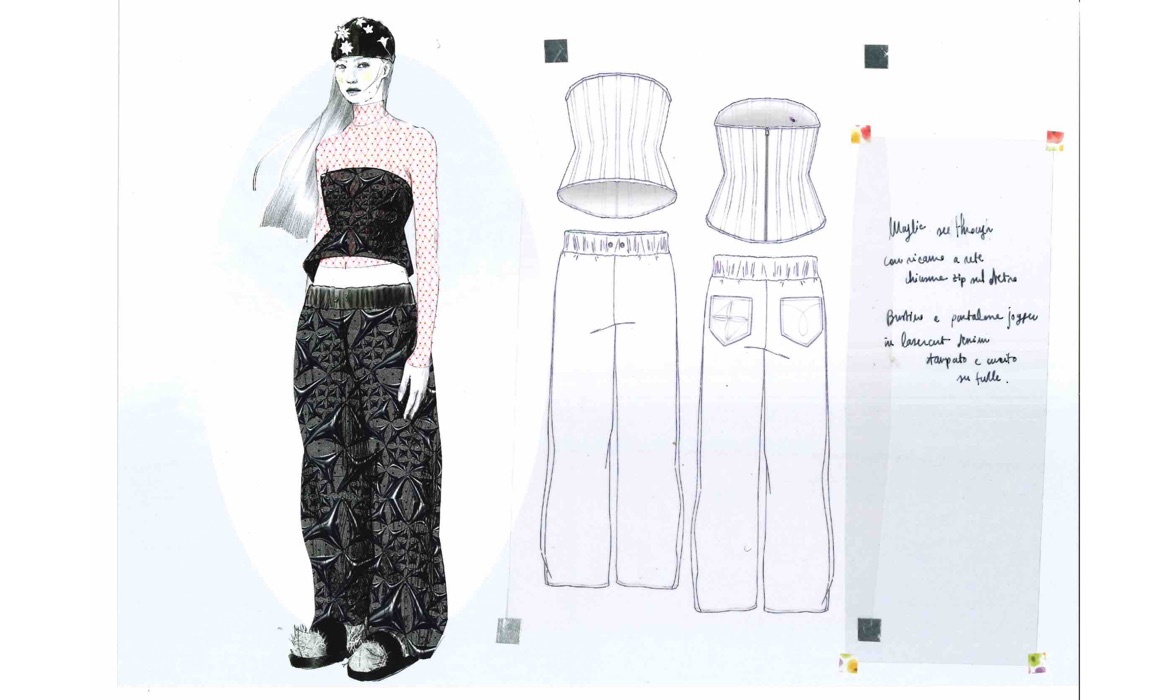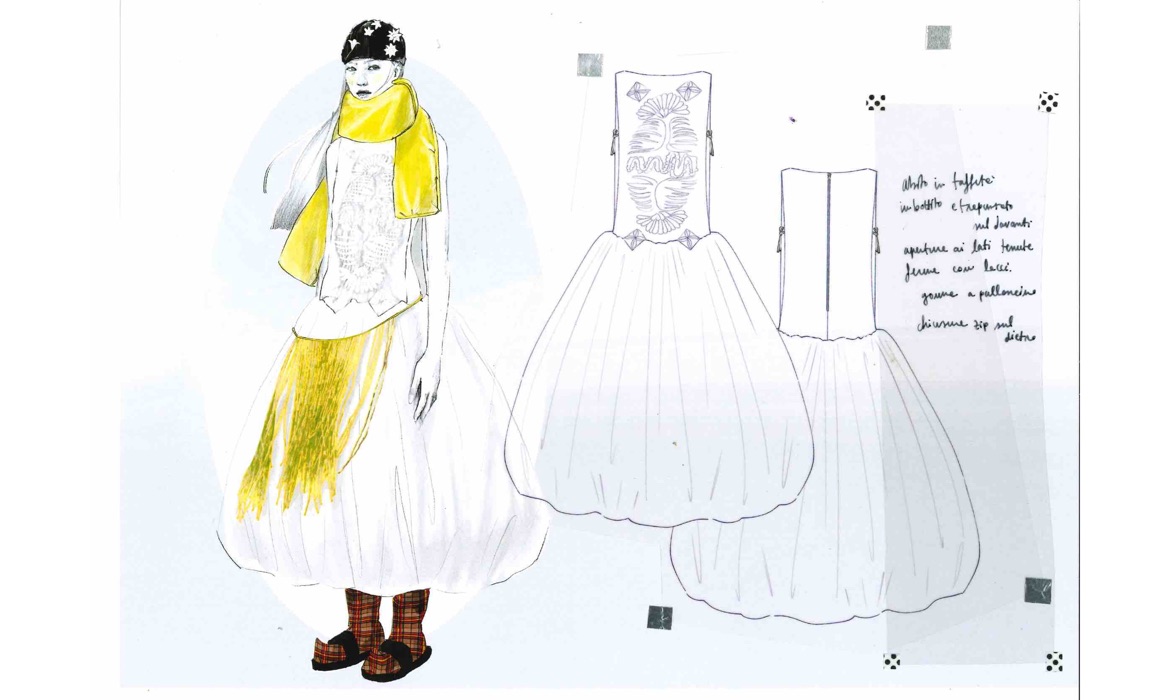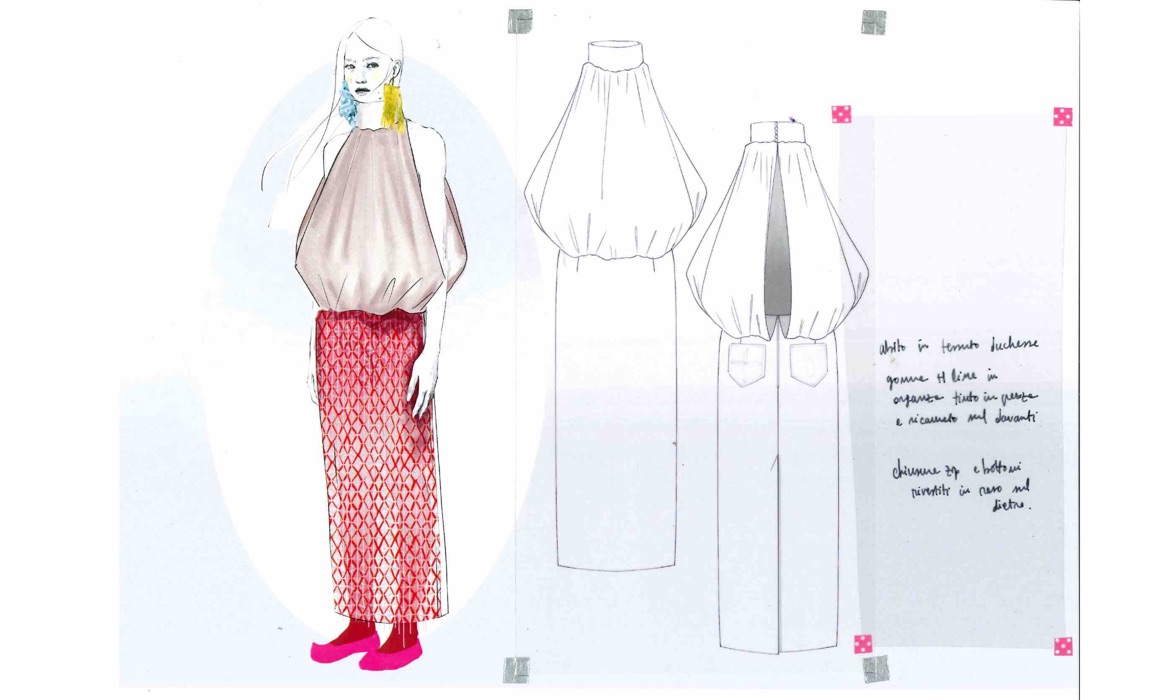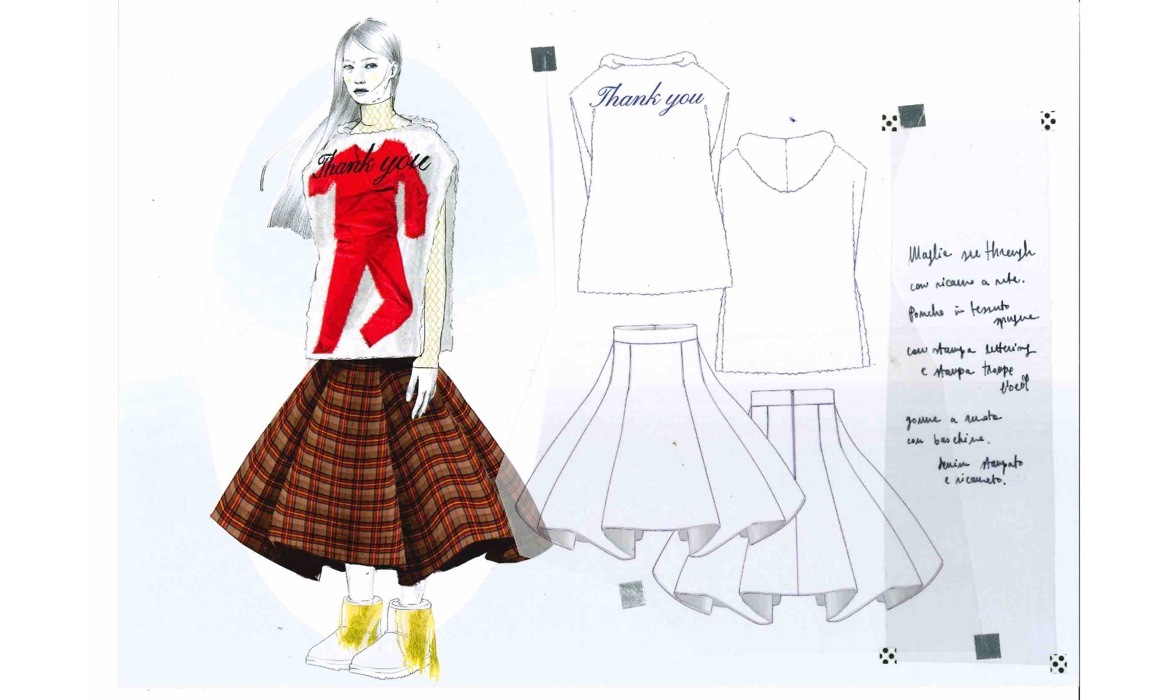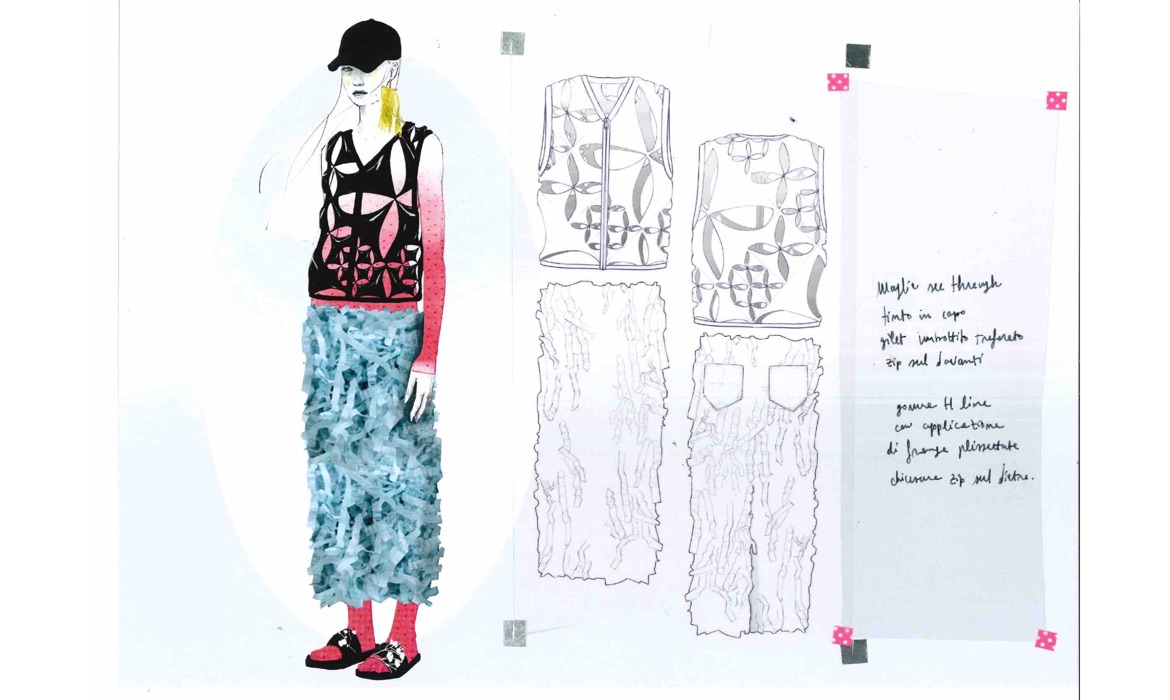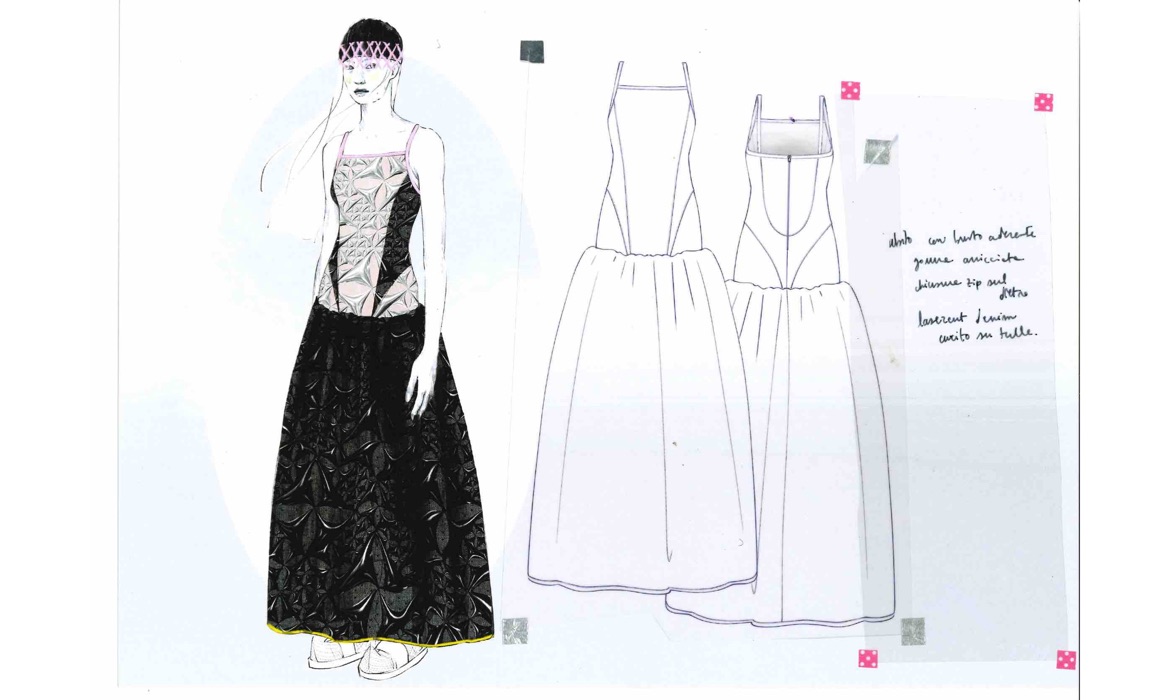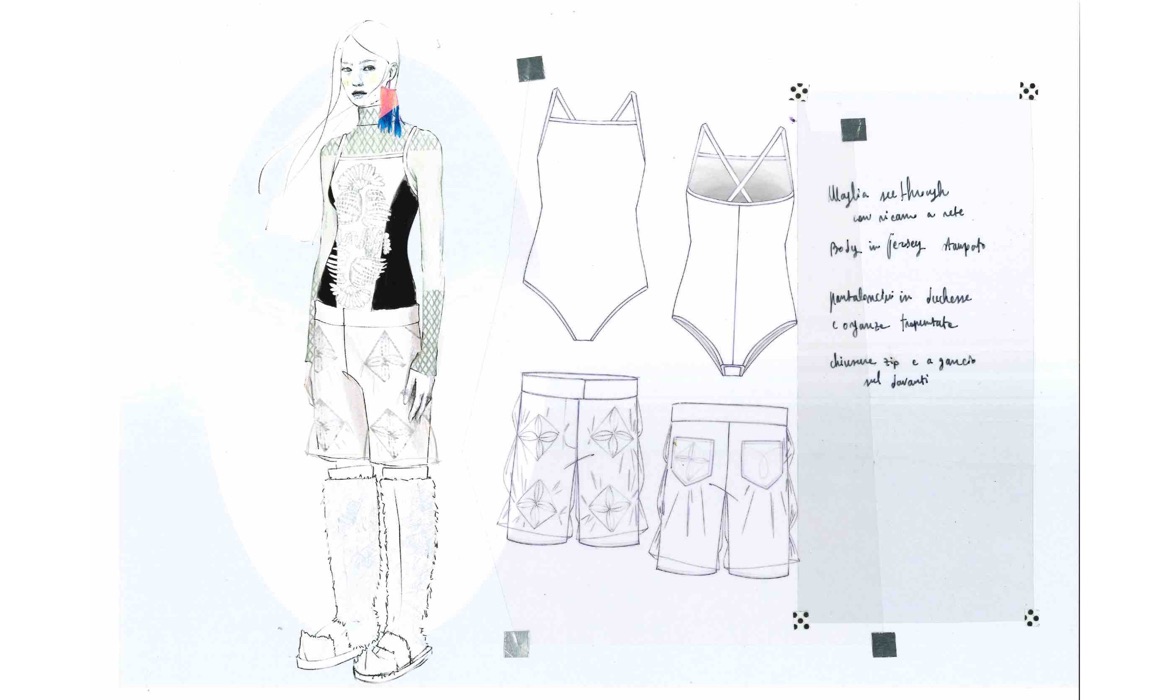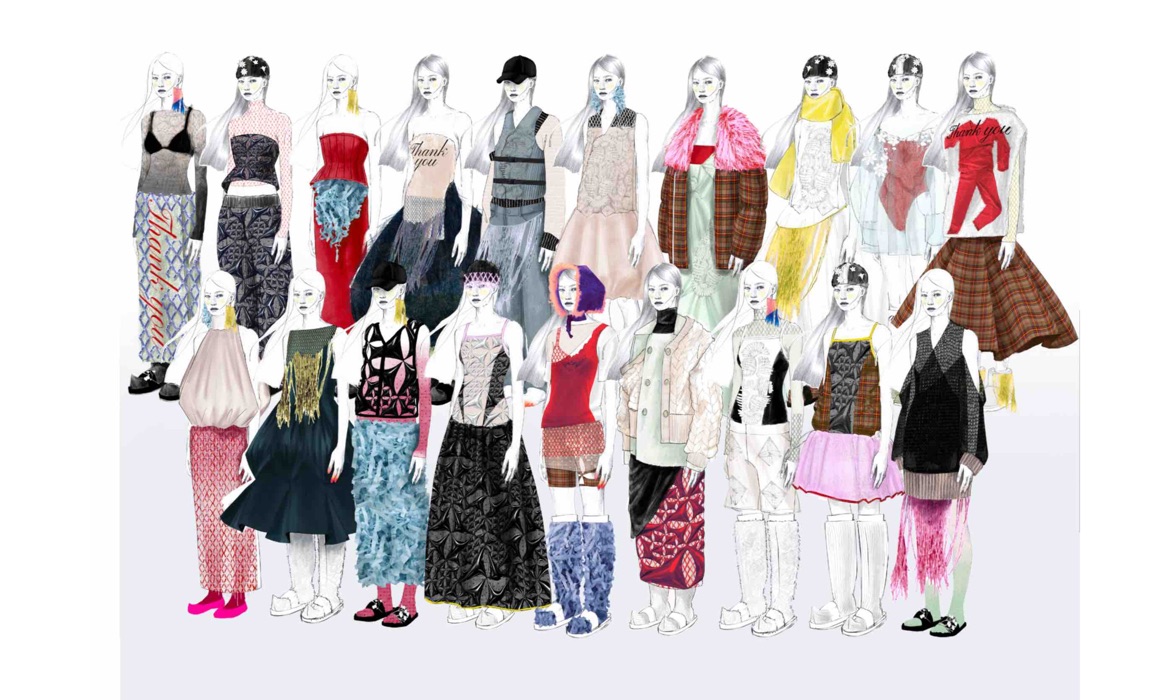Present è una collezione donna il cui concept nasce dal desiderio di ricambiare i doni ricevuti durante il percorso di formazione.
Al fine di codificare un linguaggio autentico e sincero è stata posta la cruciale domanda circa l’identità personale, giungendo alla conclusione che, paradossalmente, per definire il Proprio è necessario relazionarsi con l’Altro. La ricerca adotta tale logica e naviga tra immagini con forti contrasti e incongruenze. I look sono caratterizzati da una confusione stagionale e culturale in quanto prendono come riferimento le periferie di Seoul nell’inverno del 72, dove si presenta una bizarra fusione tra il vestire locale e occidentale, alle quali si accostano foto esclusivamente estive che immortalano la città vissuta in prima persona. I veri protagonisti della collezione sono i doni materiali ricevuti dalla Corea: oggetti assolutamente comuni ma impregnati di intrinsechi significati e valori culturali che ricreano una patria provvisoria. Regalando il proprio Altro, Present vuole trascinare il pubblico in un mondo di segnali disorientanti coinvolgendolo in un gioco dove, indagando, può ottenere una nuova percezione delle cose.
Tutti i flussi di pensiero e i riferimenti di immagini vicine e lontane si coagulano nell’immagine di cinque look. I doni passati, arrivati a bordo di un aereo, vengono strumentalizzati e usati come parole da declinare o coniugare attraverso la grammatica del processo creativo al fine di comporre una collezione che sia comunicante quale vuole essere Present.
Present is a womenswear collection, and its concept comes from the desire to reciprocate the gifts received during the personal growth.
In order to codify an authentic and sincere language, the crucial question about identity had to be asked, and it reached the conclusion that, paradoxically, to define one’s Own it is necessary to relate to the Other. The research adopts this logic and navigates between images with strong contrasts and inconsistencies. The looks are characterized by a seasonal and cultural confusion as they take as reference the suburbs of Seoul during the winter of ‘72, where there is a bizarre fusion between local and Western clothing, combined with only summer pictures taken in Seoul firsthand. The true protagonists of the collection are the material gifts received from Korea: common objects but imbued with intrinsic meanings and cultural values that recreate a temporary homeland. By giving away its Other, Present wants to drag the public into a world of disorienting signals and involve them in a game where they can obtain a new perception of things.
All the flows of thought and the references of near and far images coagulate in the image of five looks. Past gifts, arriving on board an aircraft, are exploited and used as words to be declined or combined through the grammar of the creative process to compose a collection that communicates what Present wants to be.
